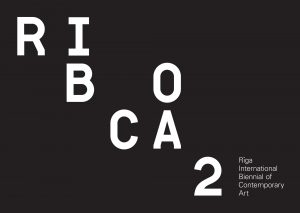The 2nd Riga International Biennial of Contemporary Art (RIBOCA2)
May 16–October 11, 2020
The Riga International Biennial of Contemporary Art is delighted to announce the appointment of Rebecca Lamarche-Vadel as chief curator for the second edition of RIBOCA, which will run from May 16, 2020–October 11, 2020 in Riga, Latvia.
RIBOCA2 public opening: Saturday, May 16, 2020
Press and professional preview: Thursday, May 14–Friday, May 15, 2020
Rebecca Lamarche-Vadel was formerly a curator at the Palais de Tokyo in Paris. She curated the most recent show by Tomás Saraceno, ON AIR, the most attended exhibition in their history. She has regularly collaborated with institutions and biennials including the Château de Versailles, the 11th Bamako Biennale, the Stedelijk Museum, and the 12th Biennale de Lyon among many others.
Following the first edition in 2018, RIBOCA2 will retain its strong European focus and regional profile, taking the rich history of the Baltic States as its foundation, by highlighting artists from the wider region and allowing international artists to engage with its cultural, historical and socio-political context. The biennial is continuously dedicated to a sustainable model based on best practices that prioritize artists and artistic production and encourages dialogue and engagement with local communities and socially diverse audiences.
The curatorial concept of RIBOCA2 will be announced in May 2019.
About the curator
Rebecca Lamarche-Vadel is a French curator and writer, former curator at Palais de Tokyo (2012–19). Her internationally critically acclaimed projects include the solo exhibitions of Tomás Saraceno, Tino Sehgal, Marguerite Humeau, Ed Atkins, David Douard, Helen Marten, François Curlet and Jon Rafman. ON AIR by Tomás Saraceno (2018–19) spanned the entire 13000m2 of the Palais de Tokyo and became the most attended exhibition in its history, while the carte blanche to Tino Sehgal (2016) was the largest live-art show ever presented worldwide. In 2015 she presented the group show Le bord des mondes (The edge of the worlds), which focused on the limits of the territories of art after the writings of Marcel Duchamp.
Lamarche-Vadel has regularly collaborated with international institutions, such as the Château de Versailles with Voyage d’Hiver (associate curator, 2017), the 11th Bamako Biennale (curatorial advisory, 2017–18), MoMA PS1 with the projects Truce (2013) and Bright Intervals (2014), the Stedelijk Museum and Trouw with Landscape (2013), and the 12th Biennale de Lyon with Unachieved Presents (Resonance, 2013).
About RIBOCA
The Riga International Biennial of Contemporary Art (RIBOCA) is an international biennial with a European focus and a strong regional profile, founded in 2016. Taking the rich history of Riga and the Baltic states as its underlying framework, the biennial highlights the artistic landscape of the wider region and creates opportunities for artists to enter into dialogue with the cultural, historical and socio-political context of the city and its geographic surrounds.
Taking into account criticisms of the proliferation of biennial culture, or “biennialisation” as it has been called, RIBOCA aims to create a sustainable model based on best practices that prioritise artists, artistic production and the meticulous presentation and mediation of art. Reflecting the biennial’s global outlook and mission to increase artistic engagement between the Baltic region and the rest of the world, a significant proportion of the commissioned and selected artists either live, work or were born in the Baltic region, a territory which still remains relatively unexplored despite its prolific artistic production.
RIBOCA sees itself as a critical site of artistic experimentation and knowledge production, an activator of co-operation and exchange between local and regional actors and institutions, an instigator of generosity towards peers, and a barometer of current social, political and economic issues filtered through artistic practices.


